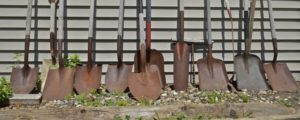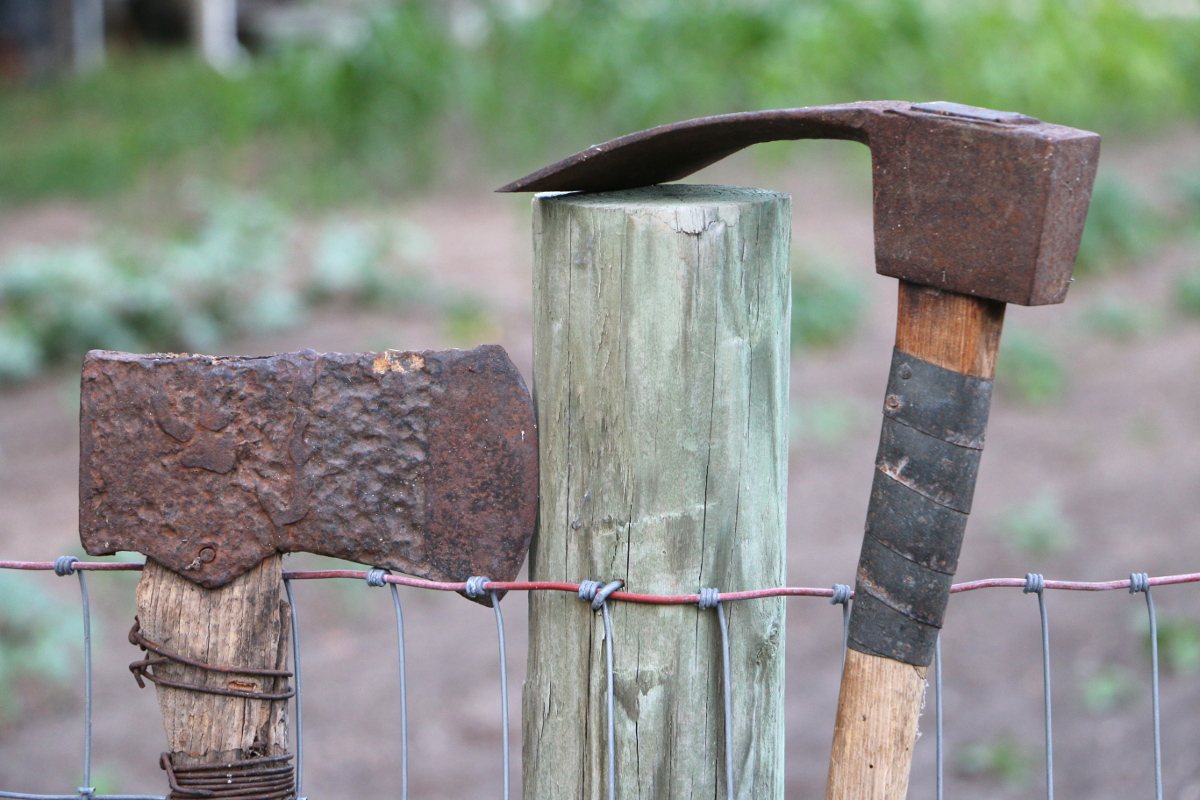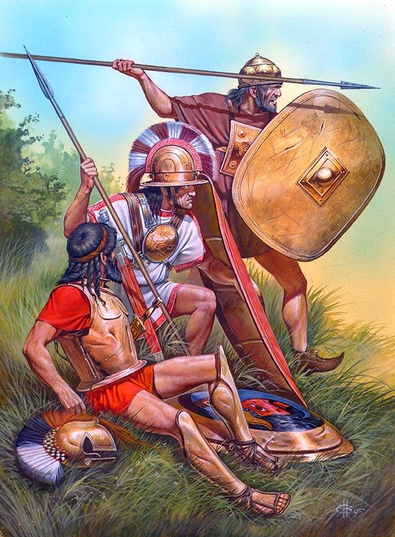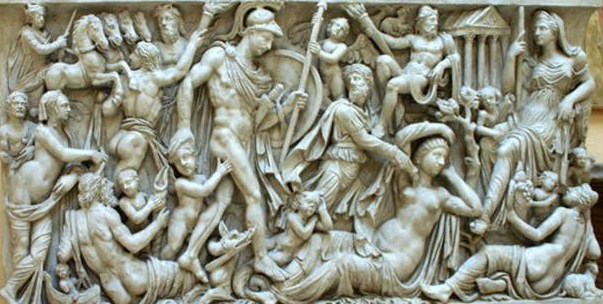Editor’s Note: Written by Stephen Clay McGehee. Reposted with permission from The Southern Agrarian – http://www.southernagrarian.com/
In a reply to a previous post [Ed. Note: This is a link to his own website], I was reminded of the need to learn to make do with what we have and to repair and maintain things. That brought to mind the two tools shown in the photo above – both tools have been in the family for several generations. The grubbing hoe is still in quite usable condition despite the handle being wrapped with a strip of metal that has been nailed in place. The axe, on the other hand, is just kept as a reminder of a time when tools were treasured and were not easily replaced.
One of life’s great lessons is learning that it always pays to buy quality and then maintain it. Quality tools, well cared for, maintained, and repaired as needed, are far better than saving a few dollars buying Chinese junk and then replacing it because it’s not worth repairing.
 One of my routines is to always wash all of my garden tools and set them out to dry when I’m finished using them. Most of the time, that is all that is needed before hanging them in their place in the tool shed. If a tool should start to get some rust on it, I clean it off with a wire wheel or whatever is appropriate, rub a bit of oil on it, then put it away. About once a year, I go through all of my tools and use a file to sharpen them, but some tools get sharpened more frequently.
One of my routines is to always wash all of my garden tools and set them out to dry when I’m finished using them. Most of the time, that is all that is needed before hanging them in their place in the tool shed. If a tool should start to get some rust on it, I clean it off with a wire wheel or whatever is appropriate, rub a bit of oil on it, then put it away. About once a year, I go through all of my tools and use a file to sharpen them, but some tools get sharpened more frequently.
Wooden handles are too-often neglected. I use a rag to rub linseed oil into the wood handles of my tools. If they are treated with reasonable care and stored out of the weather, a good hardwood tool handle should last a lifetime and be able to be passed down to the next generation. Some folks prefer to paint their wood handles, but I’ve never had any desire to do that. 1) I love the look and feel of real wood, and 2) Paint can hide cracks and other problems that should be quickly taken care of.
The grubbing hoe in the photo probably came down with the family when they moved from Alabama to Florida in about 1921 – nearly a century ago. Although we usually associate covered wagons with pioneers moving west, that is how my grandparents moved their family and household goods down here. My grandfather built a covered wagon that was pulled by oxen. It was driven down what was called the Florida Short Route, marked by crude signs and tree carvings saying “FSR”. The cattle were carried by train, and some of the family was loaded into an old Ford, and off they went to find a place where the farming was easier than the rock-filled clay of McGehee Mountain in Clay County, Alabama.
For more content like this, please visit The Southern Agrarian – http://www.southernagrarian.com/










I remember my Depression era grandparents keeping tools, repairing them, and using them until they fell apart. I still have some of my dad’s ancient tools.
The tool on the right is an adze for hewing wood.
It is Not a grubbing hoe.
It’s Not for digging in dirt.
You are correct – it is an adze. It had always been used as a grubbing hoe, so that’s what I assumed it was. Thank you for pointing that out.
You are correct. It is an adze and not a grubbing hoe. That’s what it had been used for many years ago, so I assumed that’s what it was. Thank you for pointing that out.
I just felt that I had to say something thinking how the edge could be ruined by digging in dirt or hitting a rock.. An adze handle has two bends in it and has a tapered square to fit the eye.
I always used half turpentine and boiled linseed oil that was recommended in an article for my handles.
I don’t know that it’s better than just linseed oil though.
I use used motor oil on the metal. It seems to do a better job of keeping the rust down.
Both of them should be treasured even though both look like they would still hold up to any job that they would be needed to do.
FYI, the curved handles didn’t come about on many hand tools until the very late 1700s early 1800s
And if you have these old tools sitting around and you don’t want to repair them, you can send them to me.
I just came across your site and like it very much. As to my first comment that “grub hoe” is a adz. for squaring timbers.
Yes, it is. Someone already mentioned it. Another example of how we all learn from one another!